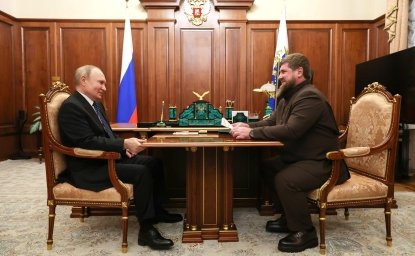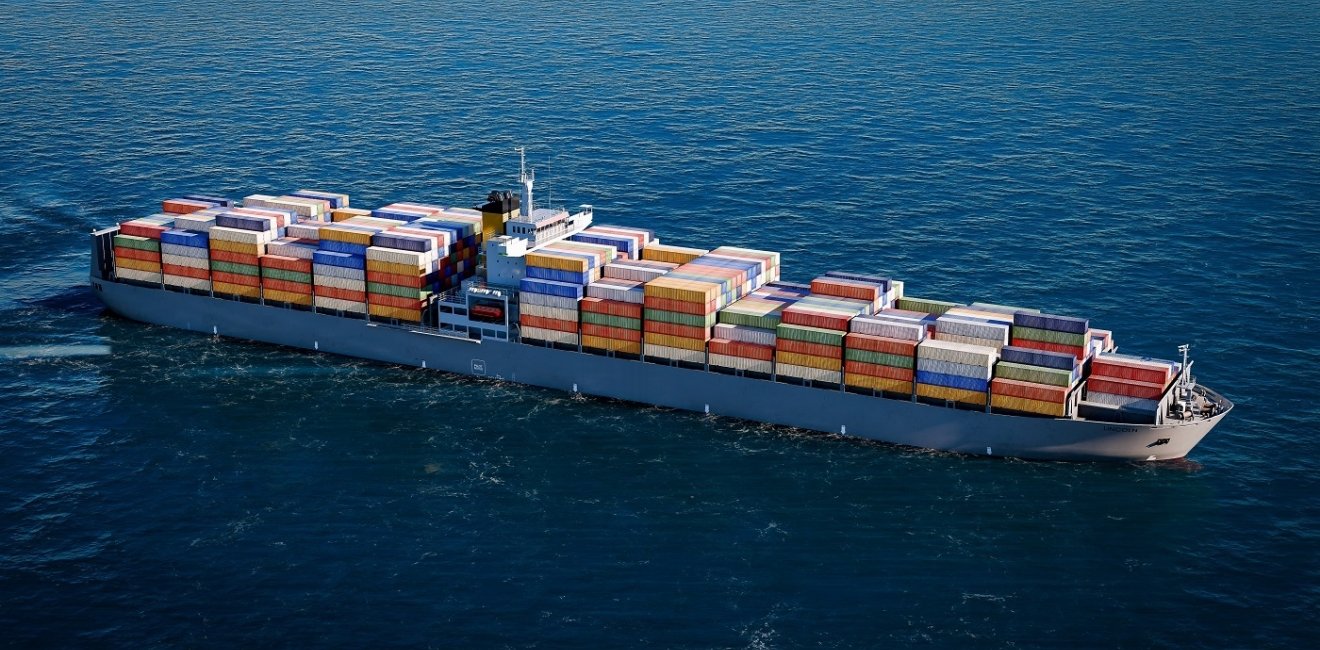
A blog of the Kennan Institute
Russia’s war against Ukraine has been accompanied by the severing of economic, financial, and cultural ties between Russia and the West. Yet Russia has not become a "besieged fortress" and is not seeking self-sufficiency.
It is important for Putin to maintain export revenues and not leave industry without the necessary imported components, including dual-use ones. The Kremlin hopes to undermine the unity of Western democracies and put together an anti-Western coalition involving as many participants from the global south as possible. The success of this project largely depends on China.
Russia’s "pivot to the East" ended up turning Moscow into China's junior partner. In 2023, Chinese exports to Russia grew by 64 percent compared to prewar 2021. China not only has taken the lion's share of the Russian passenger car market, it has also, while refraining from supplying arms, exported to Russia components needed for arms production, including machine tools, chips, telecommunications equipment, and optical devices. China's share of the supply of goods for Russia’s military industry and dual-use technologies has risen from 32 percent to 89 percent.
Most of these products are not of Chinese origin but transit through China and Hong Kong. As China values its trade partnerships with the United States and Europe, it treads a middle way by supplying Russia with components for arms production rather than weapons as such.
Shadow Supply Chains and the West’s Involvement
The role of imports in maintaining the Russian army’s combat capability cannot be overestimated. Russian tanks, artillery, and missiles are made with Western hardware and software. Without them, production would grind to a halt. Over the past twenty years, the Russian military-industrial complex replaced the outdated Soviet manufacturing base with an imported one. Germany, Taiwan, Japan, Italy, the Czech Republic, Korea, Switzerland, and the United States have played the largest role in this process.
Paradoxically, Russia continues to receive machine tools and components for its military industry from Ukraine’s allies. According to the Kyiv School of Economics, of the 2,797 imported components found in Russian military equipment, 95 percent were produced in countries supporting Ukraine and only 4 percent were sourced from China.
Exports of military technology and dual-use goods to Russia from countries imposing sanctions on Russia fell sharply over the past two years, while exports from neutral countries rose sharply, a study by the Bank of Finland Institute for Emerging Economies (BOFIT) has found. Supplies did go down by 22 percent, but Russian manufacturers still import almost four-fifths of the components and electronics they need for the military industry.
Russian businesses have woven an intricate web of shadow supply chains. Apart from China (and Hong Kong), Russia’s most important sources are Turkey, the United Arab Emirates, several countries in Southeast Asia, and the countries of the former USSR. Western manufacturers have effectively turned a blind eye to the final destination of the supplies, citing an inability to control their buyers.
“There are many countries that have not imposed sanctions on Russia and play a critical role as buyers of Russian goods that are no longer being exported to Europe and suppliers of inputs that Russia can no longer buy from its traditional trading partners. The Russian sanctions regime is far from global,” Yuriy Gorodnichenko (Berkeley), Iikka Korhonen (BOFIT), and Elina Ribakova (PIIE, KSE) write in a recent CEPR policy paper. Countries accounting for about 42 percent of global GDP have not imposed sanctions on Russia.
Stopping the flow of components for the Russian military industry right now is an impossible task. The allies can only use sanctions as an argument, and they do not work on everyone. In order for electronics and telecommunications equipment manufacturers such as Cisco, Intel, and AMD to start identifying each company specifically set up to organize supplies to Russia, a system analogous to the banking industry's "Know Your Customer" would have to be introduced in sensitive industries. It is possible, but it would require a major tightening of state regulation, cost a lot of time and money, increase prices, and provoke strong resistance.
A Check on Globalization
Over the past decade, the United States has not only imposed sanctions on Russia but also severely restricted trade, technology exports, and investment in the Chinese economy. The world economy reactions to the measures against China and against Russia have been surprisingly similar. Trump's tariffs against China, Biden's expanded export controls on shipments of microchips and other technology to China, and his restrictions on direct investment in Chinese IT are leading to geoeconomic fragmentation: a breakdown of global trade into blocs and islands.
China's exports to the United States have fallen sharply but have not disappeared. China has increased exports and investment in Vietnam, Mexico, Taiwan, Brazil, and other countries, which in turn have replaced Chinese suppliers in the U.S. market. In fact, U.S. dependence on Chinese exports has taken a different form: the more a country increases its imports from China and the more investment it receives from it, the faster its exports to the United States grow. The role of connector countries linking the warring camps is growing.
The conflict between Russia and the West has placed India as one of the main connectors between Russian oil and the markets. China, Turkey, the UAE, and several post-Soviet countries connect Russia with technology suppliers. The more restrictions that are imposed on world trade and investment, the greater the role of connectors. In the "new Cold War," the IMF believes, being a connector country is more advantageous than being part of one of the warring blocs, unless the trading blocs completely cut ties with each other.
U.S. oil production has risen sharply, Europe has cut Russian oil and gas supplies, and U.S. and European exports to Russia have fallen sharply. However, China and Russia are doing better than the United States and the EU at making their economies less dependent on trade with geopolitical rivals. For example, China has reduced its dependence on supplies from Europe, while Germany's dependence on supplies from China has increased. Overall, the United States, Germany, and the UK have reduced the geopolitical distance of their trade by only 4–10 percent (i.e., they trade a bit less with geopolitical rivals and a bit more with friends).
China is gradually preparing for the scenario of increased geoeconomic fragmentation by seriously expanding cooperation with countries in the global south and making its financial system more resistant to financial sanctions. The struggle for connector countries is intensifying: China is seeking political and economic favor with countries in Southeast Asia, South America, the Persian Gulf, and Africa. Russia is trying to find connector countries in China, Turkey, the UAE, Georgia, and others. Economic cooperation is becoming a way of strengthening a country’s position in the geopolitical competition.
Russia is interested in further escalation not only in the war with Ukraine (as indicated by Putin's demand that Kyiv give up Zaporizhzhia and Kherson) but also in global geoeconomic fragmentation. Russia is now sailing alone, with only Belarus, Iran and North Korea as unconditional allies. Moscow favors even closer ties with China. But this will be possible only if China breaks its ties with the West, for example by regaining control of Taiwan by force.
Driving Wedges between Allies
The deterioration of the situation in the Middle East, which has proved very useful to Putin, also contributes to geoeconomic fragmentation. It is effectively driving wedges between countries that support Ukraine, diverting attention and resources, and provoking conflicts within Western democracies. Recently, in response to several countries allowing Ukraine to hit Russia with long-range weapons, Putin threatened to supply long-range weapons to his partners: "those states or even legal structures that are under military pressure."
Putin might mean Iran, Syria, and maybe North Korea. By “legal structures” Putin could mean Hamas, Hezbollah, the Taliban, the Houthis in Yemen—any group that is capable of aggravating the geopolitical situation and causing problems for allies of Ukraine.
Putin does not care what those problems are: an influx of refugees, a split over aid to Israel, a victory for the right in a European country. His aim is to maximize geoeconomic fragmentation and political divisions, to poke holes in the opponents' camp, to gain new allies, and to make countries that support Ukraine more neutral. The more disorder and chaos in the world, the greater the fragmentation, the more anti-Western policies the China-led bloc will be able to pursue.
The opinions expressed in this article are those solely of the author and do not reflect the views of the Kennan Institute
Author

Journalist and public educator; author of Telegram channel EventsAndTexts

Kennan Institute
The Kennan Institute is the premier US center for advanced research on Eurasia and the oldest and largest regional program at the Woodrow Wilson International Center for Scholars. The Kennan Institute is committed to improving American understanding of Russia, Ukraine, Central Asia, the South Caucasus, and the surrounding region through research and exchange. Read more

Explore More in The Russia File
Browse The Russia File
Chechnya as a Model of Modern Russia

Russia’s Indigenous Communities and the War in Ukraine

Gas and Power in a Changing US–Russia Relationship

